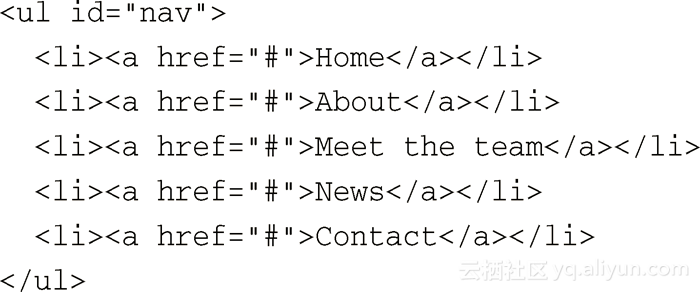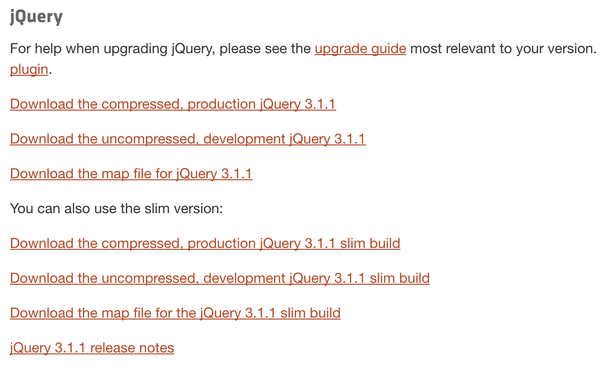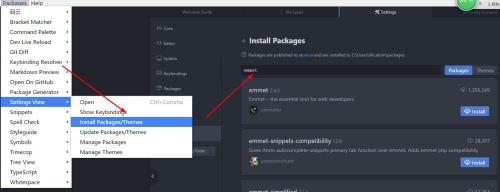今天內容
1. Spring框架的AOP之注解的方式
2. Spring框架的JDBC模板
3. Spring框架的事務管理
案例一:使用Spring框架的AOP技術對DAO層的功能進行增強
1. 使用Spring框架的AOP技術對DAO層的功能進行增強
技術分析之:Spring框架的AOP技術(注解方式)
1. 步驟一:創建JavaWEB項目,引入具體的開發的jar包
* 先引入Spring框架開發的基本開發包
* 再引入Spring框架的AOP的開發包
* spring的傳統AOP的開發的包
* spring-aop-4.2.4.RELEASE.jar
* com.springsource.org.aopalliance-1.0.0.jar
* aspectJ的開發包
* com.springsource.org.aspectj.weaver-1.6.8.RELEASE.jar
* spring-aspects-4.2.4.RELEASE.jar
?
2. 步驟二:創建Spring的配置文件,引入具體的AOP的schema約束
<beans xmlns="http://www.springframework.org/schema/beans"
? ? ? xmlns:xsi="http://www.w3.org/2001/XMLSchema-instance"
? ? ? xmlns:aop="http://www.springframework.org/schema/aop"
? ? ? xsi:schemaLocation="
http://www.springframework.org/schema/beans http://www.springframework.org/schema/beans/spring-beans.xsd
http://www.springframework.org/schema/aop http://www.springframework.org/schema/aop/spring-aop.xsd">
</beans>
?
3. 步驟三:創建包結構,編寫具體的接口和實現類
* com.itheima.demo1
* CustomerDao -- 接口
* CustomerDaoImpl -- 實現類
?
4. 步驟四:將目標類配置到Spring中
<bean id="customerDao" class="com.itheima.demo1.CustomerDaoImpl"/>
?
5. 步驟五:定義切面類
* 添加切面和通知的注解
* @Aspect -- 定義切面類的注解
* 通知類型(注解的參數是切入點的表達式)
* @Before -- 前置通知
? * @AfterReturing -- 后置通知
? * @Around -- 環繞通知
? * @After -- 最終通知
? * @AfterThrowing -- 異常拋出通知
* 具體的代碼如下
@Aspect
public class MyAspectAnno {
@Before(value="execution(public void com.itheima.demo1.CustomerDaoImpl.save())")
public void log(){
System.out.println("記錄日志...");
}
}
?
6. 步驟六:在配置文件中定義切面類
<bean id="myAspectAnno" class="com.itheima.demo1.MyAspectAnno"/>
?
7. 步驟七:在配置文件中開啟自動代理
<aop:aspectj-autoproxy/>
?
8. 完成測試
@RunWith(SpringJUnit4ClassRunner.class)
@ContextConfiguration("classpath:applicationContext.xml")
public class Demo1 {
@Resource(name="customerDao")
private CustomerDao customerDao;
@Test
public void run1(){
customerDao.save();
customerDao.update();
}
}
技術分析之通知類型
1. 通知類型
* @Before -- 前置通知
? * @AfterReturing -- 后置通知
? * @Around -- 環繞通知(目標對象方法默認不執行的,需要手動執行)
? * @After -- 最終通知
? * @AfterThrowing -- 異常拋出通知
?
2. 配置通用的切入點
* 使用@Pointcut定義通用的切入點
@Aspect
public class MyAspectAnno {
@Before(value="MyAspectAnno.fn()")
public void log(){
System.out.println("記錄日志...");
}
@Pointcut(value="execution(public void com.itheima.demo1.CustomerDaoImpl.save())")
public void fn(){}
}
案例二:Spring框架的事務管理完成轉賬的案例
需求分析
1. 完成一個轉賬的功能,需要進行事務的管理,使用Spring的事務管理的方式完成
Spring框架的JDBC模板技術
技術分析之Spring框架的JDBC模板技術概述
1. Spring框架中提供了很多持久層的模板類來簡化編程,使用模板類編寫程序會變的簡單
2. 提供了JDBC模板,Spring框架提供的
* JdbcTemplate類
?
3. Spring框架可以整合Hibernate框架,也提供了模板類
* HibernateTemplate類
技術分析之演示JDBC的模板類
1. 步驟一:創建數據庫的表結構
create database spring_day03;
use spring_day03;
create table t_account(
id int primary key auto_increment,
name varchar(20),
money double
);
?
2. 引入開發的jar包
* 先引入IOC基本的6個jar包
* 再引入Spring-aop的jar包
* 最后引入JDBC模板需要的jar包
* MySQL數據庫的驅動包
* Spring-jdbc.jar
* Spring-tx.jar
?
3. 編寫測試代碼(自己來new對象的方式)
@Test
public void run1(){
// 創建連接池,先使用Spring框架內置的連接池
DriverManagerDataSource dataSource = new DriverManagerDataSource();
dataSource.setDriverClassName("com.mysql.jdbc.Driver");
dataSource.setUrl("jdbc:mysql:///spring_day03");
dataSource.setUsername("root");
dataSource.setPassword("root");
// 創建模板類
JdbcTemplate jdbcTemplate = new JdbcTemplate(dataSource);
// 完成數據的添加
jdbcTemplate.update("insert into t_account values (null,?,?)", "測試",10000);
}
技術分析之使用Spring框架來管理模板類
1. 剛才編寫的代碼使用的是new的方式,應該把這些類交給Spring框架來管理。
2. 修改的步驟如下
* 步驟一:Spring管理內置的連接池
<bean id="dataSource" class="org.springframework.jdbc.datasource.DriverManagerDataSource">
? <property name="driverClassName" value="com.mysql.jdbc.Driver"/>
? <property name="url" value="jdbc:mysql:///spring_day03"/>
? <property name="username" value="root"/>
? <property name="password" value="root"/>
? </bean>
* 步驟二:Spring管理模板類
<bean id="jdbcTemplate" class="org.springframework.jdbc.core.JdbcTemplate">
? <property name="dataSource" ref="dataSource"/>
? </bean>
* 步驟三:編寫測試程序
@RunWith(SpringJUnit4ClassRunner.class)
@ContextConfiguration("classpath:applicationContext.xml")
public class Demo2 {
@Resource(name="jdbcTemplate")
private JdbcTemplate jdbcTemplate;
@Test
public void run2(){
jdbcTemplate.update("insert into t_account values (null,?,?)", "測試2",10000);
}
}
技術分析之Spring框架管理開源的連接池
1. 管理DBCP連接池
* 先引入DBCP的2個jar包
* com.springsource.org.apache.commons.dbcp-1.2.2.osgi.jar
* com.springsource.org.apache.commons.pool-1.5.3.jar
* 編寫配置文件
<bean id="dataSource" class="org.apache.commons.dbcp.BasicDataSource">
? <property name="driverClassName" value="com.mysql.jdbc.Driver"/>
? <property name="url" value="jdbc:mysql:///spring_day03"/>
? <property name="username" value="root"/>
? <property name="password" value="root"/>
? </bean>
?
2. 管理C3P0連接池
* 先引入C3P0的jar包
* com.springsource.com.mchange.v2.c3p0-0.9.1.2.jar
* 編寫配置文件
<bean id="dataSource" class="com.mchange.v2.c3p0.ComboPooledDataSource">
? <property name="driverClass" value="com.mysql.jdbc.Driver"/>
? <property name="jdbcUrl" value="jdbc:mysql:///spring_day03"/>
? <property name="user" value="root"/>
? <property name="password" value="root"/>
? </bean>
技術分析之Spring框架的JDBC模板的簡單操作
1. 增刪改查的操作
@RunWith(SpringJUnit4ClassRunner.class)
@ContextConfiguration("classpath:applicationContext.xml")
public class SpringDemo3 {
@Resource(name="jdbcTemplate")
private JdbcTemplate jdbcTemplate;
@Test
// 插入操作
public void demo1(){
jdbcTemplate.update("insert into account values (null,?,?)", "冠希",10000d);
}
@Test
// 修改操作
public void demo2(){
jdbcTemplate.update("update account set name=?,money =? where id = ?", "思雨",10000d,5);
}
@Test
// 刪除操作
public void demo3(){
jdbcTemplate.update("delete from account where id = ?", 5);
}
@Test
// 查詢一條記錄
public void demo4(){
Account account = jdbcTemplate.queryForObject("select * from account where id = ?", new BeanMapper(), 1);
System.out.println(account);
}
@Test
// 查詢所有記錄
public void demo5(){
List<Account> list = jdbcTemplate.query("select * from t_account", new BeanMapper());
for (Account account : list) {
System.out.println(account);
}
}
}
class BeanMapper implements RowMapper<Account>{
public Account mapRow(ResultSet rs, int arg1) throws SQLException {
Account account = new Account();
account.setId(rs.getInt("id"));
account.setName(rs.getString("name"));
account.setMoney(rs.getDouble("money"));
return account;
}
}
技術分析之Spring框架的事務管理
技術分析之事務的回顧
1. 事務:指的是邏輯上一組操作,組成這個事務的各個執行單元,要么一起成功,要么一起失敗!
2. 事務的特性
* 原子性
* 一致性
* 隔離性
* 持久性
?
3. 如果不考慮隔離性,引發安全性問題
* 讀問題:
* 臟讀:
* 不可重復讀:
* 虛讀:
* 寫問題:
* 丟失更新:
?
4. 如何解決安全性問題
* 讀問題解決,設置數據庫隔離級別
* 寫問題解決可以使用 悲觀鎖和樂觀鎖的方式解決
技術分析之Spring框架的事務管理相關的類和API
1. PlatformTransactionManager接口 -- 平臺事務管理器.(真正管理事務的類)。該接口有具體的實現類,根據不同的持久層框架,需要選擇不同的實現類!
2. TransactionDefinition接口 -- 事務定義信息.(事務的隔離級別,傳播行為,超時,只讀)
3. TransactionStatus接口 -- 事務的狀態
?
4. 總結:上述對象之間的關系:平臺事務管理器真正管理事務對象.根據事務定義的信息TransactionDefinition 進行事務管理,在管理事務中產生一些狀態.將狀態記錄到TransactionStatus中
?
5. PlatformTransactionManager接口中實現類和常用的方法
1. 接口的實現類
* 如果使用的Spring的JDBC模板或者MyBatis框架,需要選擇DataSourceTransactionManager實現類
* 如果使用的是Hibernate的框架,需要選擇HibernateTransactionManager實現類
2. 該接口的常用方法
* void commit(TransactionStatus status)
* TransactionStatus getTransaction(TransactionDefinition definition)
* void rollback(TransactionStatus status)
6. TransactionDefinition
1. 事務隔離級別的常量
* static int ISOLATION_DEFAULT -- 采用數據庫的默認隔離級別
* static int ISOLATION_READ_UNCOMMITTED
* static int ISOLATION_READ_COMMITTED
* static int ISOLATION_REPEATABLE_READ
* static int ISOLATION_SERIALIZABLE
2. 事務的傳播行為常量(不用設置,使用默認值)
* 先解釋什么是事務的傳播行為:解決的是業務層之間的方法調用!!
* PROPAGATION_REQUIRED(默認值) -- A中有事務,使用A中的事務.如果沒有,B就會開啟一個新的事務,將A包含進來.(保證A,B在同一個事務中),默認值!!
* PROPAGATION_SUPPORTS -- A中有事務,使用A中的事務.如果A中沒有事務.那么B也不使用事務.
* PROPAGATION_MANDATORY -- A中有事務,使用A中的事務.如果A沒有事務.拋出異常.
* PROPAGATION_REQUIRES_NEW(記)-- A中有事務,將A中的事務掛起.B創建一個新的事務.(保證A,B沒有在一個事務中)
* PROPAGATION_NOT_SUPPORTED -- A中有事務,將A中的事務掛起.
* PROPAGATION_NEVER -- A中有事務,拋出異常.
* PROPAGATION_NESTED(記) -- 嵌套事務.當A執行之后,就會在這個位置設置一個保存點.如果B沒有問題.執行通過.如果B出現異常,運行客戶根據需求回滾(選擇回滾到保存點或者是最初始狀態) 技術分析之搭建事務管理轉賬案例的環境(強調:簡化開發,以后DAO可以繼承JdbcDaoSupport類)
1. 步驟一:創建WEB工程,引入需要的jar包
* IOC的6個包
* AOP的4個包
* C3P0的1個包
* MySQL的驅動包
* JDBC目標2個包
* 整合JUnit測試包
?
2. 步驟二:引入配置文件
* 引入配置文件
* 引入log4j.properties
* 引入applicationContext.xml
<bean id="dataSource" class="com.mchange.v2.c3p0.ComboPooledDataSource">
? <property name="driverClass" value="com.mysql.jdbc.Driver"/>
? <property name="jdbcUrl" value="jdbc:mysql:///spring_day03"/>
? <property name="user" value="root"/>
? <property name="password" value="root"/>
? </bean>
?
3. 步驟三:創建對應的包結構和類
* com.itheima.demo1
* AccountService
* AccountServlceImpl
* AccountDao
* AccountDaoImpl
?
4. 步驟四:引入Spring的配置文件,將類配置到Spring中
<bean id="accountService" class="com.itheima.demo1.AccountServiceImpl">
</bean>
<bean id="accountDao" class="com.itheima.demo1.AccountDaoImpl">
</bean>
?
5. 步驟五:在業務層注入DAO ,在DAO中注入JDBC模板(強調:簡化開發,以后DAO可以繼承JdbcDaoSupport類)
<bean id="accountService" class="com.itheima.demo1.AccountServiceImpl">
<property name="accountDao" ref="accountDao"/>
</bean>
<bean id="accountDao" class="com.itheima.demo1.AccountDaoImpl">
<property name="dataSource" ref="dataSource"/>
</bean>
?
6. 步驟六:編寫DAO和Service中的方法
public class AccountDaoImpl extends JdbcDaoSupport implements AccountDao {
public void outMoney(String out, double money) {
this.getJdbcTemplate().update("update t_account set money = money = ? where name = ?", money,out);
}
public void inMoney(String in, double money) {
this.getJdbcTemplate().update("update t_account set money = money + ? where name = ?", money,in);
}
}
?
7. 步驟七:編寫測試程序.
@RunWith(SpringJUnit4ClassRunner.class)
@ContextConfiguration("classpath:applicationContext.xml")
public class Demo1 {
@Resource(name="accountService")
private AccountService accountService;
@Test
public void run1(){
accountService.pay("冠希", "美美", 1000);
}
}
技術分析之Spring框架的事務管理的分類
1. Spring的事務管理的分類
1. Spring的編程式事務管理(不推薦使用)
* 通過手動編寫代碼的方式完成事務的管理(不推薦)
2. Spring的聲明式事務管理(底層采用AOP的技術)
* 通過一段配置的方式完成事務的管理(重點掌握注解的方式)
技術分析之Spring框架的事務管理之編程式的事務管理(了解)
1. 說明:Spring為了簡化事務管理的代碼:提供了模板類 TransactionTemplate,所以手動編程的方式來管理事務,只需要使用該模板類即可!!
?
2. 手動編程方式的具體步驟如下:
1. 步驟一:配置一個事務管理器,Spring使用PlatformTransactionManager接口來管理事務,所以咱們需要使用到他的實現類!!
<!-- 配置事務管理器 -->
<bean id="transactionManager" class="org.springframework.jdbc.datasource.DataSourceTransactionManager">
<property name="dataSource" ref="dataSource"/>
</bean>
2. 步驟二:配置事務管理的模板
<!-- 配置事務管理的模板 -->
<bean id="transactionTemplate" class="org.springframework.transaction.support.TransactionTemplate">
<property name="transactionManager" ref="transactionManager"/>
</bean>
3. 步驟三:在需要進行事務管理的類中,注入事務管理的模板.
<bean id="accountService" class="com.itheima.demo1.AccountServiceImpl">
<property name="accountDao" ref="accountDao"/>
<property name="transactionTemplate" ref="transactionTemplate"/>
</bean>
4. 步驟四:在業務層使用模板管理事務:
// 注入事務模板對象
private TransactionTemplate transactionTemplate;
public void setTransactionTemplate(TransactionTemplate transactionTemplate) {
this.transactionTemplate = transactionTemplate;
}
public void pay(final String out, final String in, final double money) {
transactionTemplate.execute(new TransactionCallbackWithoutResult() {
protected void doInTransactionWithoutResult(TransactionStatus status) {
// 扣錢
accountDao.outMoney(out, money);
int a = 10/0;
// 加錢
accountDao.inMoney(in, money);
}
});
}
Spring框架的事務管理之聲明式事務管理,即通過配置文件來完成事務管理(AOP思想)
1. 聲明式事務管理又分成兩種方式
* 基于AspectJ的XML方式(重點掌握)
* 基于AspectJ的注解方式(重點掌握)
Spring框架的事務管理之基于AspectJ的XML方式(重點掌握)
1. 步驟一:恢復轉賬開發環境
?
2. 步驟二:引入AOP的開發包
?
3. 步驟三:配置事務管理器
<!-- 配置事務管理器 -->
<bean id="transactionManager" class="org.springframework.jdbc.datasource.DataSourceTransactionManager">
<property name="dataSource" ref="dataSource"/>
</bean>
?
4. 步驟四:配置事務增強
<!-- 配置事務增強 -->
<tx:advice id="txAdvice" transaction-manager="transactionManager">
<tx:attributes>
<!--
name :綁定事務的方法名,可以使用通配符,可以配置多個。
propagation :傳播行為
isolation :隔離級別
read-only :是否只讀
timeout :超時信息
rollback-for:發生哪些異常回滾.
no-rollback-for:發生哪些異常不回滾.
-->
<!-- 哪些方法加事務 -->
<tx:method name="pay" propagation="REQUIRED"/>
</tx:attributes>
</tx:advice>
?
5. 步驟五:配置AOP的切面
<!-- 配置AOP切面產生代理 -->
<aop:config>
? <aop:advisor advice-ref="myAdvice" pointcut="execution(* com.itheima.demo2.AccountServiceImpl.pay(..))"/>
? </aop:config>
* 注意:如果是自己編寫的切面,使用<aop:aspect>標簽,如果是系統制作的,使用<aop:advisor>標簽。Java web框架。
?
6. 步驟六:編寫測試類
@RunWith(SpringJUnit4ClassRunner.class)
@ContextConfiguration("classpath:applicationContext2.xml")
public class Demo2 {
@Resource(name="accountService")
private AccountService accountService;
@Test
public void run1(){
accountService.pay("冠希", "美美", 1000);
}
}
Spring框架的事務管理之基于AspectJ的注解方式(重點掌握,最簡單的方式)
1. 步驟一:恢復轉賬的開發環境
?
2. 步驟二:配置事務管理器
<!-- 配置事務管理器 -->
<bean id="transactionManager" class="org.springframework.jdbc.datasource.DataSourceTransactionManager">
<property name="dataSource" ref="dataSource"/>
</bean>
?
3. 步驟三:開啟注解事務
<!-- 開啟注解事務 -->
<tx:annotation-driven transaction-manager="transactionManager"/>
?
4. 步驟四:在業務層上添加一個注解:@Transactional
* 注意:如果在類上添加該注解就表示該類中所有方法都有該事務,如果只是在方法上添加了注解表示只有該方法包含有事務
?
5. 編寫測試類
@RunWith(SpringJUnit4ClassRunner.class)
@ContextConfiguration("classpath:applicationContext3.xml")
public class Demo3 {
@Resource(name="accountService")
private AccountService accountService;
@Test
public void run1(){
accountService.pay("冠希", "美美", 1000);
}
}
?













